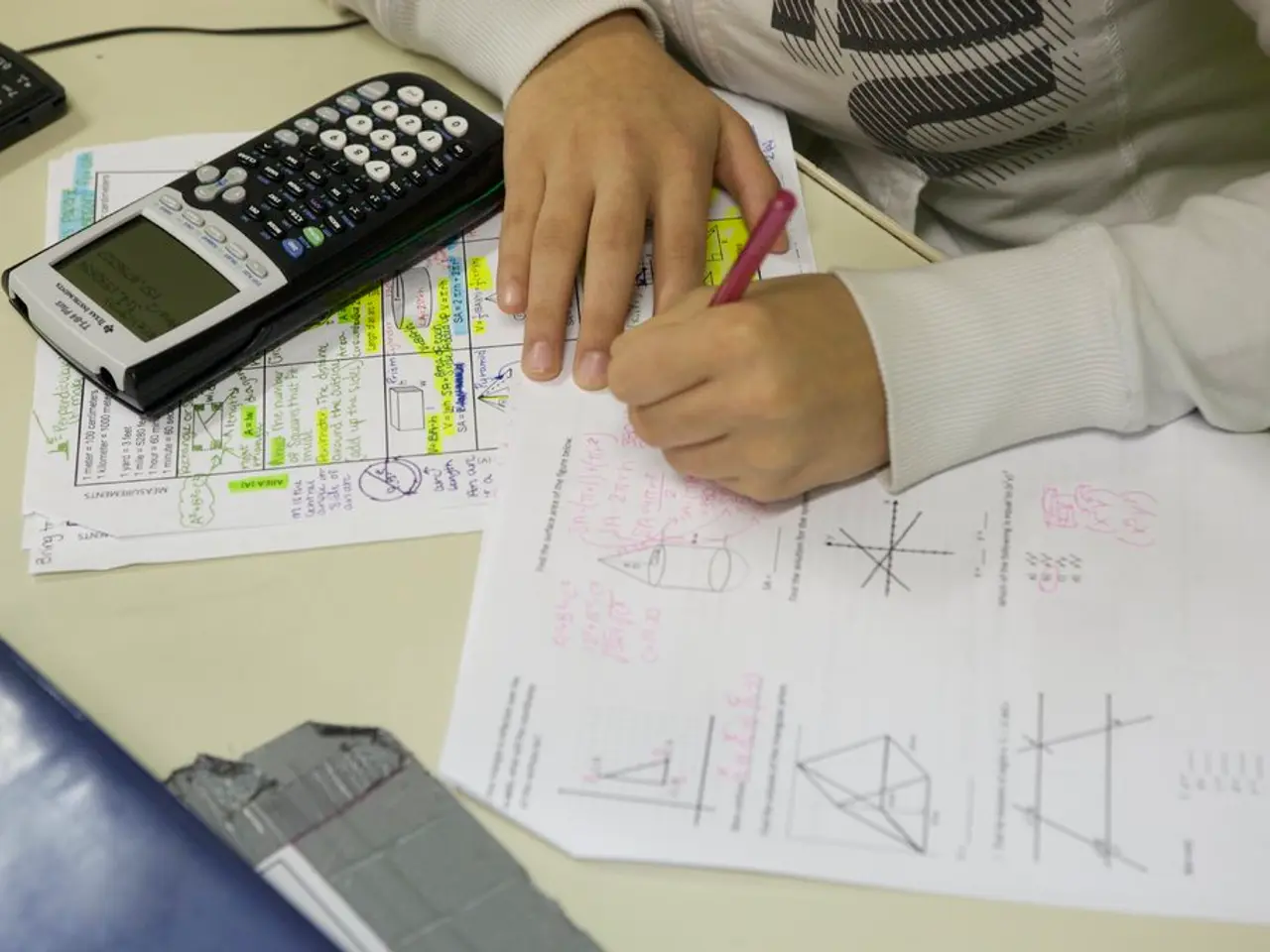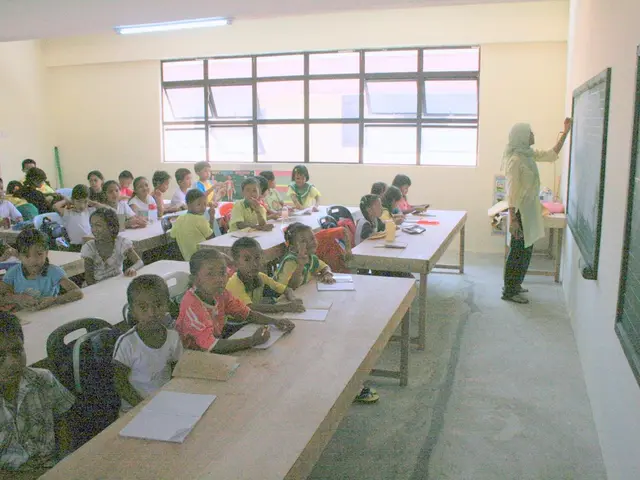Enhanced mathematical abilities found in learners with difficulty, thanks to brain stimulation
In a groundbreaking development, a recent study published in PLoS Biology has highlighted the potential of a non-invasive brain stimulation technique called transcranial random noise stimulation (tRNS) to significantly improve math learning, particularly for individuals with weaker natural brain connectivity.
Led by Professor Roi Cohen Kadosh from the University of Surrey, the study involved 72 healthy adults who participated in a five-day math training program. The research employed a novel approach integrating double-blind excitatory neurostimulation-high-frequency tRNS.
The benefits of tRNS were most pronounced in people with weaker connectivity between brain regions involved in mathematical cognition, such as the dorsolateral prefrontal cortex (dlPFC) and the posterior parietal cortex (PPC). These regions are crucial for numerical and spatial processing, as well as executive functions like working memory, attention, and problem-solving.
The study found that safe electrical brain stimulation to the dlPFC improved math learning in individuals aged 18 to 30. Interestingly, participants with weaker positive baseline frontoparietal connectivity, typically associated with poorer learning performance, experienced enhanced learning outcomes following dlPFC-tRNS only.
The enhancement in math learning associated with tRNS is linked to lower levels of GABA, a brain chemical involved in learning. Individuals with naturally lower GABA concentrations showed greater improvements with tRNS, suggesting that reduced GABAergic inhibition might facilitate the neural plasticity needed for learning under electrical stimulation.
Professor Cohen Kadosh believes that by addressing neurobiological constraints, we can help more people reach their potential and reduce long-term inequalities. The findings suggest that targeted brain stimulation could have a significant impact on improving mathematical learning, particularly for individuals with poorer learning performance.
The study's multimodal approach sheds light on the interplay between functional connectivity and GABAergic modulation in the efficacy of brain-based interventions to augment learning outcomes. This offers promising avenues for non-invasive cognitive enhancement and educational equity for individuals who struggle with math due to biological constraints.
Moreover, the study elucidates the causal role of the dlPFC and frontoparietal network in a critical academic learning skill. The findings suggest that targeted brain stimulation could help bridge the educational gap, known as the Matthew effect, where those who start ahead continue to advance while others fall further behind.
The study was funded by the European Research Council and the Wellcome Trust, and its results could shape future policies aimed at boosting math skills across the UK population, especially in young adults. The study's findings underscore the interplay between functional connectivity, neurochemical environment, and the effectiveness of neurostimulation interventions, opening up exciting possibilities for the future of education and cognitive enhancement.
- The study published in PLoS Biology reveals the potential of transcranial random noise stimulation (tRNS) to enhance math learning, especially for individuals with weaker natural brain connectivity.
- The researchers led by Professor Roi Cohen Kadosh employed a double-blind excitatory neurostimulation-high-frequency tRNS approach during a five-day math training program.
- The benefits of tRNS were most noticeable in individuals with weaker connectivity between brain regions involved in mathematical cognition, such as the dorsolateral prefrontal cortex (dlPFC) and the posterior parietal cortex (PPC).
- tRNS to the dlPFC improved math learning in individuals aged 18 to 30, and those with weaker positive baseline frontoparietal connectivity experienced enhanced learning outcomes.
- The enhancement in math learning associated with tRNS is linked to lower levels of GABA, a brain chemical involved in learning, and individuals with naturally lower GABA concentrations showed greater improvements with tRNS.
- tRNS offers promising avenues for non-invasive cognitive enhancement and educational equity for individuals who struggle with math due to biological constraints.
- The study's findings could shape future policies aimed at boosting math skills across the UK population, especially in young adults, and open up exciting possibilities for the future of education and cognitive enhancement in health-and-wellness, mental-health, and education-and-self-development.







